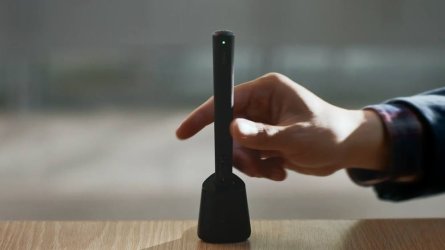Meta Quest Blog:
Meta Quest 3 is a “standalone” headset, which means you can catch a live concert or comedy show, play immersive games, and hang out with friends from around the world—no wires required. But we like to think of it as part of a broader ecosystem, too.
That philosophy extends all the way back to 2019 when we launched the Link Cable, enabling VR enthusiasts to connect the original Quest headset to their PC, if they wanted. In the years since, we’ve made that PC connection easier with Air Link, which lets you wirelessly stream PC content to your Meta Quest headset, and we doubled-down on mixed reality so you can blend the physical and virtual worlds.
Today, we’re excited to announce and release Meta Quest HDMI Link for Meta Quest 2, 3, and Pro. Our goal is to once again enable you to connect your headset to a whole new category of devices.

HDMI Link lets you connect your Meta Quest headset to devices with an HDMI or DisplayPort output, including handheld PCs or consoles, laptops, and more. With HDMI Link, you can then display this 2D content in VR on a massive low-latency “screen,” similar to the Theater View we released in our recent v67 software update.
Roommate using the TV? Staying in a hotel and want to play games on a big screen? No problem—with HDMI Link, your favorite games are there in your headset. HDMI Link outputs games at 1080p with near-zero latency on a screen that you can resize and reposition as needed.
Like we said, it also works with laptops and phones. Trapped on a flight and want to watch a movie, or maybe get some work done without anyone looking over your shoulder? Most content should display seamlessly through HDMI Link, whether you want to play or be productive. (Note: Certain apps—especially streaming apps—utilize built-in copy protection software that may interfere with HDMI Link.)

There are other options that are easier to use under ideal circumstances. Air Link, for instance, is great if you have reliable WiFi. The same goes for Xbox Cloud Gaming (Beta), which is an excellent option for 2D gaming on Quest when available. HDMI Link is great for situations where the WiFi is spotty, though—and the only option when there’s no internet at all. It also supports many devices that would otherwise be unavailable on Quest.
Setup
Now, some caveats. HDMI Link does require additional third-party hardware—specifically, a UVC and UAC compatible capture card and any associated cables (USB 3.0 recommended, see below). It’s basically plug-and-play, but not quite as easy as setting up Air Link, for instance, so we’re releasing HDMI Link on App Lab for now.That said, the setup process isn’t too difficult. All you need to do is:
- Install Meta Quest HDMI Link on your headset.
- Connect your source device to your capture card using a simple HDMI cable, a USB-C to HDMI cable, or a Lightning to HDMI cable, depending on your device’s outputs.
- (Optional) Run USB-C power to your capture card, if available, to keep your headset charged during use.
- Connect your headset to the capture card using a USB-A female to USB-C male cable.
- Turn on the headset, grant the necessary permissions, and enjoy.
More Options for Everyone
We’re very excited to get HDMI Link into the community’s hands and hear how people use it—be it for gaming on the go, work, entertainment, or something we haven’t even predicted. We’ve long envisioned VR as a general computing platform, and that means ensuring Quest works and communicates seamlessly with the other devices you use and rely on daily.HDMI Link is our latest step to make the next computing platform a reality—and we’re confident that Meta Quest 3 remains the best value in both VR and MR at just $499.99 USD.
You can download Meta Quest HDMI Link on App Lab to get started—though remember, you’ll also need a compatible capture card and the associated cabling to connect your devices to your headset.
Read more:
Meta Quest HDMI Link Lets You Connect HDMI, DisplayPort, and USB-C Devices to Meta Quest 3
Today we're excited to release Meta Quest HDMI Link, which lets you connect your Meta Quest headset to devices with an HDMI or DisplayPort output and then display this 2D content in VR on a massive low-latency screen.
 www.meta.com
www.meta.com










